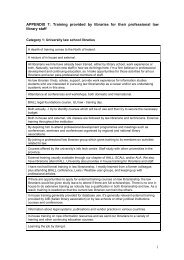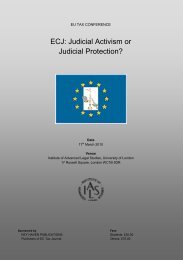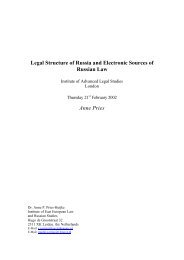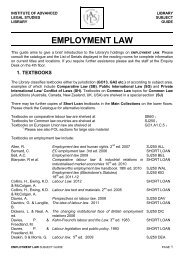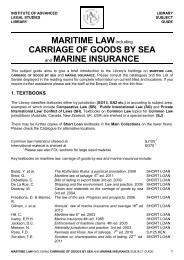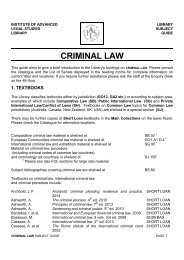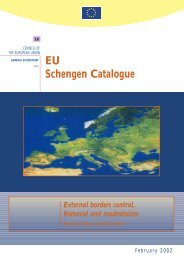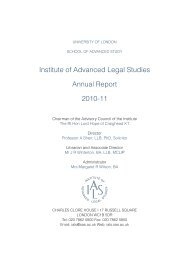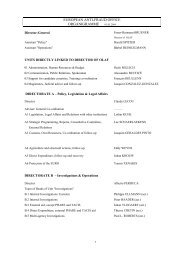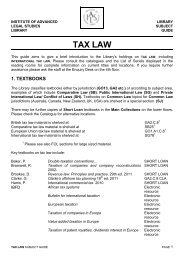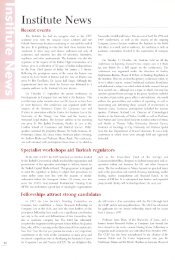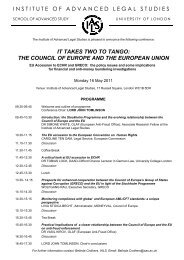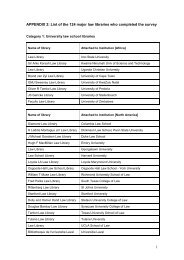a thesis - Institute of Advanced Legal Studies
a thesis - Institute of Advanced Legal Studies
a thesis - Institute of Advanced Legal Studies
Create successful ePaper yourself
Turn your PDF publications into a flip-book with our unique Google optimized e-Paper software.
2 TRUSTS IN GENERAL.<br />
look askance at all efforts in this direction—a frame <strong>of</strong> mind that<br />
has found expression in the maxim, " omnis definitio in jure periculosa<br />
est." Nevertheless, in order to attain clear ideas definitions<br />
are essential, and this is no less so in the law <strong>of</strong> trusts than in anyother<br />
branch <strong>of</strong> our law; before the scope and detail <strong>of</strong> the subject<br />
can be known it must be determined what the nature and definition<br />
<strong>of</strong> a trust is.<br />
Many attempts to define a trust have been made, but it cannot<br />
be said that any <strong>of</strong> them is entirely satisfactory. The following<br />
are the most important, placed in their chronological order:—<br />
Lord Hardwire (1734, Stitrt v. Hellish, 2 Atk. 211).—"A<br />
trust is where there is such a confidence between parties that no<br />
action at law will lie, but is merely a case for the consideration <strong>of</strong><br />
this court" (i.e., <strong>of</strong> course, the High Court <strong>of</strong> Chancery).<br />
This definition accentuates one <strong>of</strong> the most striking characteristics<br />
<strong>of</strong> a trust at the time at which it was enunciated, but, though<br />
frequently cited by later writers (e.g., Holland, Jurisprudence,<br />
6th ed. 218), is obviously insufficient at a time when the distinction<br />
between courts <strong>of</strong> equity and courts <strong>of</strong> law has ceased to exist<br />
in England. It only regards two <strong>of</strong> the peculiar features <strong>of</strong> a<br />
trust, neither <strong>of</strong> which is now essential. It makes no allusion to<br />
the fact that a trust is concerned only with property (In re Barney,<br />
(1892) 2 Ch. 265), nor to the separation between the beneficial and<br />
legal ownership <strong>of</strong> that property, nor to the obligation to which<br />
it gives rise. It was, in fact, framed merely to emphasize a point<br />
in the case then under discussion.<br />
Mr. Justice Story (1835, Equity Jurisprudence, 2nd (Eng.) ed.<br />
§ 964).—"A trust, in the most enlarged sense in which the term<br />
is used in English jurisprudence, maybe defined to be an equitable<br />
right, title, or interest in property real or personal, distinct from<br />
the legal ownership there<strong>of</strong>."<br />
This definition was adopted by Brett, L. J., in the case <strong>of</strong><br />
Wilson v. Lord Bury (1880, 5 Q. B. D. 530) ; but, as pointed out<br />
by Mr. Underhill (Law <strong>of</strong> Trusts and Trustees, 6th ed. 3) and by<br />
Mr. H. A. Smith (Principles <strong>of</strong> Equity, 2nd ed. 23), it is rather a<br />
definition <strong>of</strong> the interest <strong>of</strong> the person in whose favour a trust is<br />
created than <strong>of</strong> the trust itself, and omits to take account <strong>of</strong>



